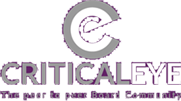 USE THIS.JPG)
While the days of the dogmatic, cigar-chomping boss who rules with an iron fist are fading fast, particularly within global businesses, the current notion of a new breed of CEO as a ‘steward’ or some sort of woolly, ultra-understanding go-between and mediator plainly doesn’t do the role justice.
The demise of the assertive CEO who seeks to stamp their authority on an organisation has been greatly exaggerated. A tone of leadership, suited to the requirements of a business, has to be established from the outset otherwise staff will lack respect and be lacklustre and disengaged. So let’s dispense with the idea that competitive and dominant leaders are at an end. It denies the very qualities needed to reach the top.
What has become increasingly difficult, and where those who lead are currently struggling, is how to ensure that strategy is being executed appropriately, often across multiple territories where operational and cultural differences need to be factored in. Given the complexity of such organisations, dogma and diktat just don’t cut it anymore. Gwen Ventris, the Former COO of AEA Technology, says: “Command and control structures have long been extinct in parts of the business world, although they remain strong, as though glued to the fabric of the business, in some of the big corporates.”
Another fine mess
It’s hard to know where to begin when solving this riddle of leadership. Andrew Powell, COO of Colt Technology Services, states that versatility is an essential quality. “The CEO needs to be almost chameleon-like in their approach to leading a business. The autocratic ‘do as I tell you’ is no longer effective as an isolated engagement strategy or style.”
The bosses of 2011 need support from reliable figures of authority who are able to make decisions and assess a situation accurately. Perhaps it was ever thus in the best organisations, but now a fluid, organic network of strategy and execution is the model which many in the business firmament feel needs to be implemented. Kai Peters, CEO of Ashridge Business School, comments: “The recession made it clear that leadership is contextual and that one needs to adapt to the new realities… The world is too complex and the leadership needs to be distributed rather than centralised.”
In short, executives have autonomy but roles, responsibilities and expectations are defined so that, when a CEO asks for an explanation, he/she actually gets one (as opposed to the buck passing of a blame culture). John Deane, Chief Executive of the Intermediary Division of Royal London Group, a mutual life and pensions company, says: “There have to be filters and that’s about people understanding their purpose so that, if an individual is responsible for governance and risk, that really is their purpose – don’t go and do their job for them as that really is a waste of time.”
Getting ensnared in the day-to-day is counterproductive, and yet the feedback from senior management to the CEO has to be right, otherwise you get a chasm between what the CEO thinks is happening and the reality of the organisation. Gwen says: “Leadership is both contextual and situational and, in most businesses today, effective leadership is complex. For me, leadership is an enabling force: the role of a leader is to create the circumstances whereby the people in the business, its customers, suppliers and shareholders are engaged in ways that are appropriate to achieve mutual objectives and sustain the business and its brand into the future.”
John echoes this view: “A CEO helps to define strategy which, at best, is a continuation of where you are if you’re in a good place but, for the vast majority of companies, it requires an element of new thinking and for other companies it can mean a significant amount of change. The chief executive has to decide on how to do that without putting so much change into an organisation, or change for change’s sake, that it can’t cope.”
What is achingly obvious is that the chief executive still decides on where a business is heading. But, in order to make informed decisions, there have to be trusted people who can provide the information and data that help to form the bigger picture. “Great teams are those who know exactly what is required and have a passion for their collective purpose,” says Peter Hawkins, Professor of Leadership at Henley Business School.
Top dog
In the final analysis, the vogue for discussing teamwork shouldn’t detract from the momentous challenge of heading up a large business. Andrew says: “Managing a board and a chairman and a top team, plus carrying the weight and expectations of an organisation on your shoulders, is a lonely place to be. Therefore, one word resonates much louder than others when talking about the key attribute for today’s CEO: ‘Courage.’”
Education and learning will push and develop you to a point but guts and instinct are not skills you can teach – let’s call it the X Factor of the CEO. “They need drive, passion, overt vision, an engagement style that can lend itself to the direct line and the matrixed organisation and an ability to pluck opportunity from the jaws of disaster,” continues Andrew.
You either have it or you don’t.
Please get in touch if you have any comments about the issues raised here.
I hope to see you soon.
Matthew
www.twitter.com/criticaleyeuk


























 (002).png)